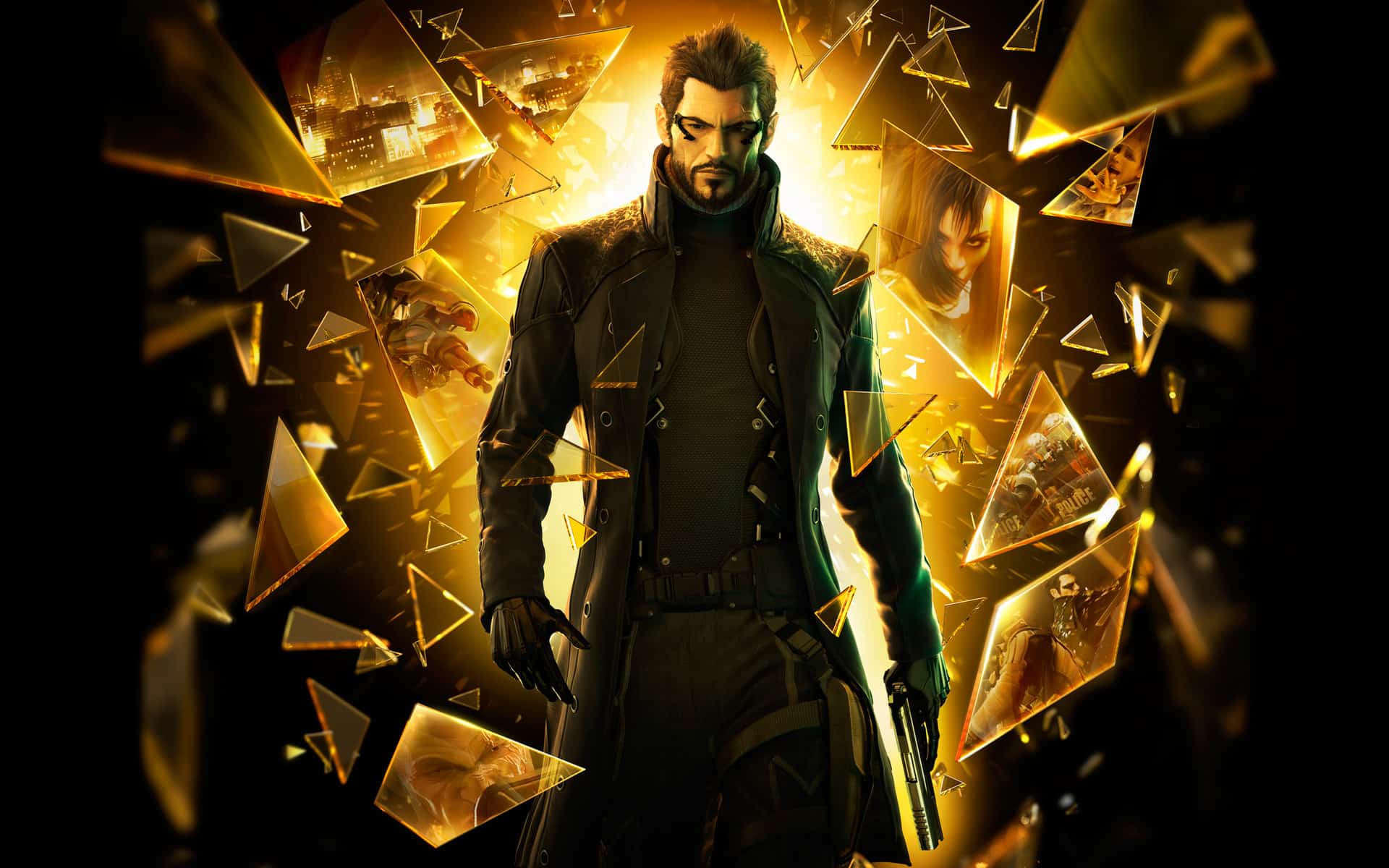You can trust VideoGamer. Our team of gaming experts spend hours testing and reviewing the latest games, to ensure you're reading the most comprehensive guide possible. Rest assured, all imagery and advice is unique and original. Check out how we test and review games here
I’ve got a slight dilemma here. On the one hand, I’m absolutely dying to tell you all about my recent hands-on with Deus Ex: Human Revolution; on the other I’m being held hostage by the angry gunman in my head who absolutely hates the discussion of spoilers, in every size, shape and form. I’m quite tempted to listen to his irate demands – partly because I totally agree with him, and partly because I don’t know what will happen if he starts blazing away with his imaginary AK-47.
We’ve actually another preview in the pipeline for Human Revolution. Due to embargo restrictions, today I’m only allowed to discuss what happens in the opening sequence, the 15 to 20 minute interlude that sets out the game’s paranoid, cyberpunk conspiracy stall (generally the one next to the tombola at the school fête). In a couple of weeks I’ll be able to talk about the first “proper” mission, and in doing so I’ll be able to go into detail with regards to the Mr Jensen’s various skills and party tricks; for now, however, I’ll be sticking to the intro – and thanks to the aforementioned spoiler-terrorist, I’ll be proceeding with extreme care for your sensitivity to narrative. Lie back in my dentist’s chair, and let me go to work with my preview drill. This won’t hurt a bit… honest.
Deus Ex: Human Revolution begins with our leading man, the gruff Adam Jensen, heading to his place of work – the super high-tech Sarif Industries. These guys are a bit like Apple, only rather than making shiny consumer gadgets that fit in the palm of your hand, they make shiny consumer gadgets that are the palm of your hand. If you’ve just suffered a 127 Hours-style boo-boo, and your right shoulder now ends in a bloody mess, Sarif will happily sort you out with a mechanical workaround. Naturally, you’ll have to stump up the cash; I’m going out on a limb here, but I a bet these things cost an arm and a leg. I can’t think of any more amputation jokes – but you get the idea.
In any case, the point is that Sarif Industries are the leading experts in transhumanist technologies. Like Apple, Sarif has its detractors, but where today’s iCritics tend to just write whiny blog posts on their HTC smartphones, Sarif’s naysayers favour a more violent, let’s-poke-Camilla-Parker-Bowles-with-a-stick-style approach to protest. At the start of Human Revolution, it’s clear that everyone at Sarif is a bit nervous. Something is clearly about to happen. And then… something does.
In the interests of avoiding unwanted spoilers, I’m not going to state exactly what happens to Adam on this fateful day. Suffice it to say the intro is neatly divided into two segments. In the first, we’re introduced to Adam’s colleagues, and furthermore to a number of plot threads that will (presumably) tie into everything that follows; the latter half then acts as your first real introduction to the game’s stealth and combat mechanics, as events take a serious turn for the worse.
While the sinister conversation of the opening cutscene is a clear nod to the original Deus Ex, it’s Half-Life that springs to mind during everything that follows. Sarif Industries feels like a living, breathing workplace, and everywhere you look there’s a neat detail to reward your curiosity. Through a window, a pair of mechanical legs can be observed jogging on a treadmill; elsewhere, test dummies are devastated by a brutal-looking claymore device. Adam’s movement through the facility is fixed, but we’re free to shift his gaze around as we like. And where Dr Freeman was a mute witness to the pre-resonance cascade world of Black Mesa, Adam actively converses with the colleagues he passes by. He’s the head of security, after all – it’s his job to know things.
Without going too heavily into the specifics, the most encouraging thing about this sequence is its understated confidence in dishing out exposition – both in terms of the characters, and the game world as a whole. You’re introduced to a number of hefty concepts – Sarif’s business, the details of something important the company is about to do, and the reaction of the (so-far unseen) outside world – but this information is doled out in a believable, organic way. Similarly, when we learn of Adam’s romantic involvement with a particular NPC, and the tension that exists between him and a co-worker, we are alerted to these things via subtle shifts in tone and body language. There’s plenty of intelligent, well-delivered dialogue, but it’s the things that are left unsaid that seem to tell us the most.
When the bullets finally do start flying, it’s gratifying to find a similar degree of subtlety in the game’s combat. Prior to the start of the play session I’m warned about the difficulties in adopting a gung-ho approach, and my initial few firefights end in unexpectedly violent failure. Even on the standard difficulty, a smattering of hits will snuff out Adam’s life, although thankfully this is also true for your foes. Even with the help of an assault rifle, it seems like suicide to take on two or more opponents at once. A far better approach is to creep around, picking people off with careful headshots. Initially the controls feel a bit slow, but you soon realise this is a deliberate design choice, encouraging precision and neatness over run-and-gun tactics. The hit animations look great, too: while headshots are clearly the order of the day, there’s something joyously evil about the way enemies react to being shot in the stomach – staggering back with a hand clutched to their belly in alarm.
While the gunplay feels reliable and solid, it’s the stealth that really impresses. By holding the left trigger when you’re near a suitable surface, Adam will obligingly duck into cover. The camera immediately switches to a third-person perspective at this point, providing a more helpful view as you shimmy along the object in question. Reach the outer edge of your cover, and you’ll often have the option to throw yourself over to another hiding spot nearby, launching the transition with a single button tap. In short, it’s a classic Gears-style setup, but while the mechanics themselves are nothing new, their implementation is far more successful than most first-person titles that spring to mind.
Naturally this is largely down the fact that Human Revolution ceases to be a first-person game when the perspective no longer suits its purposes. It’s a risky move on Eidos Montreal’s part, given that it’s tampering with the immersive quality that helps to make first-person titles work in the first place. The change is pretty much instantaneous, and initially the jump can seem a bit jarring, but by the time I reached the end of my three-hour playtest I was fairly oblivious to the shift. For now, at least, it seems as if the gamble has paid off.
Then again, by the time I’d reached the end of the demo, I had a whole bunch of other things on my mind. We’ll have to wait a couple of weeks before I can talk about exactly what these were, and to be honest it’ll be a relief to be speak a little more freely. What I can say right now is that I was absolutely thrilled by what I played a few weeks ago. As a long-term Deus Ex fan, it’s clear that Eidos Montreal wasn’t bluffing about its love for the original games. There are clear nods to the Ion Storm’s work at the turn of the millennium, but there are also new ideas – both thematically and structurally.
And even if you’re totally new to the Deus Ex universe, I can tell you right now that you need to have this on your radar. If the rest of Human Revolution can match the quality of what I’ve played so far, it’ll be one of the best games of the year. Check back here in two week’s time to find out why.
Deus Ex: Human Revolution is due for release on Xbox 360, PS3 and PC.
Deus Ex: Human Revolution
- Platform(s): macOS, PC, PlayStation 3, Xbox 360, Xbox One
- Genre(s): Action, First Person, RPG, Shooter

/https://oimg.videogamer.com/images/3242/deus_ex_3_19.jpg)






